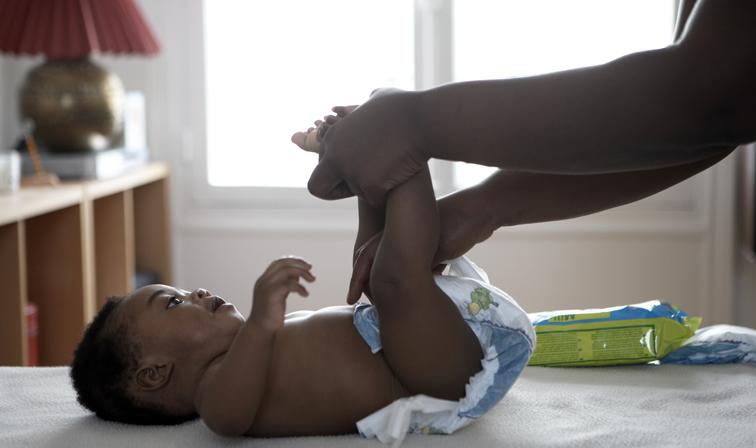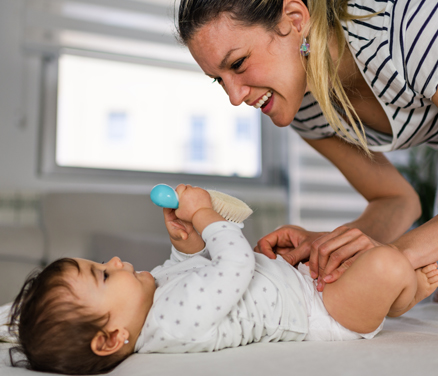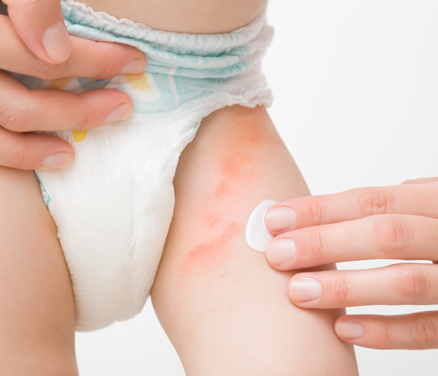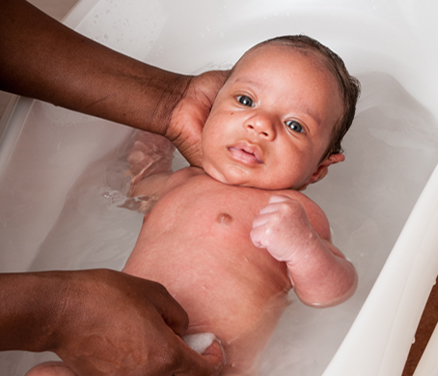
After passing the meconium (their first poop), your breastfed baby’s poop will be a watery, yellow-color with white seedy curds in it. The poop of formula-fed babies is yellow or tan. Babies will poop several times per day, often after every feeding. Occasional leaks and “blow outs” are normal but if this happens a lot, try a different size, brand or style of diaper.





